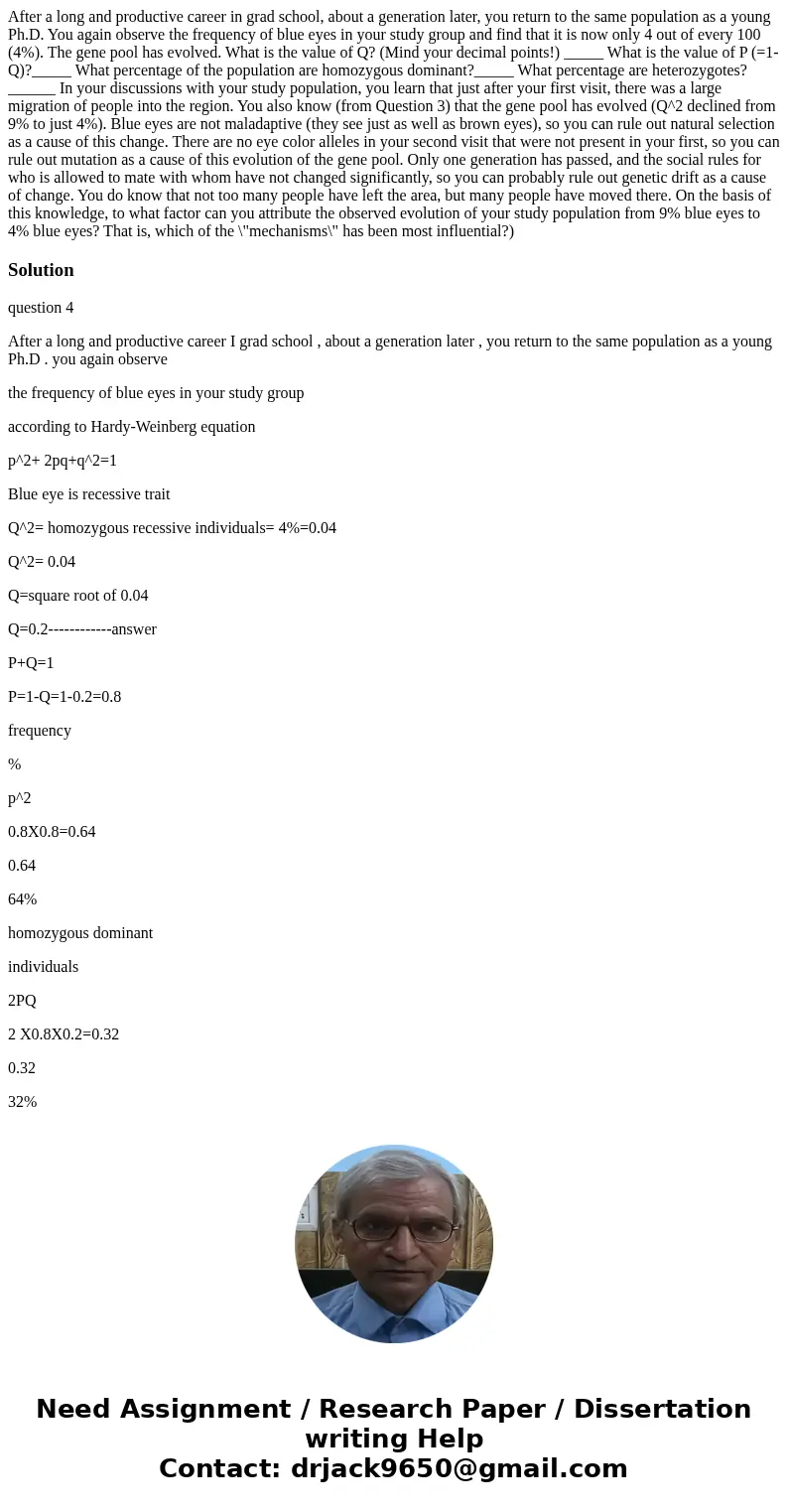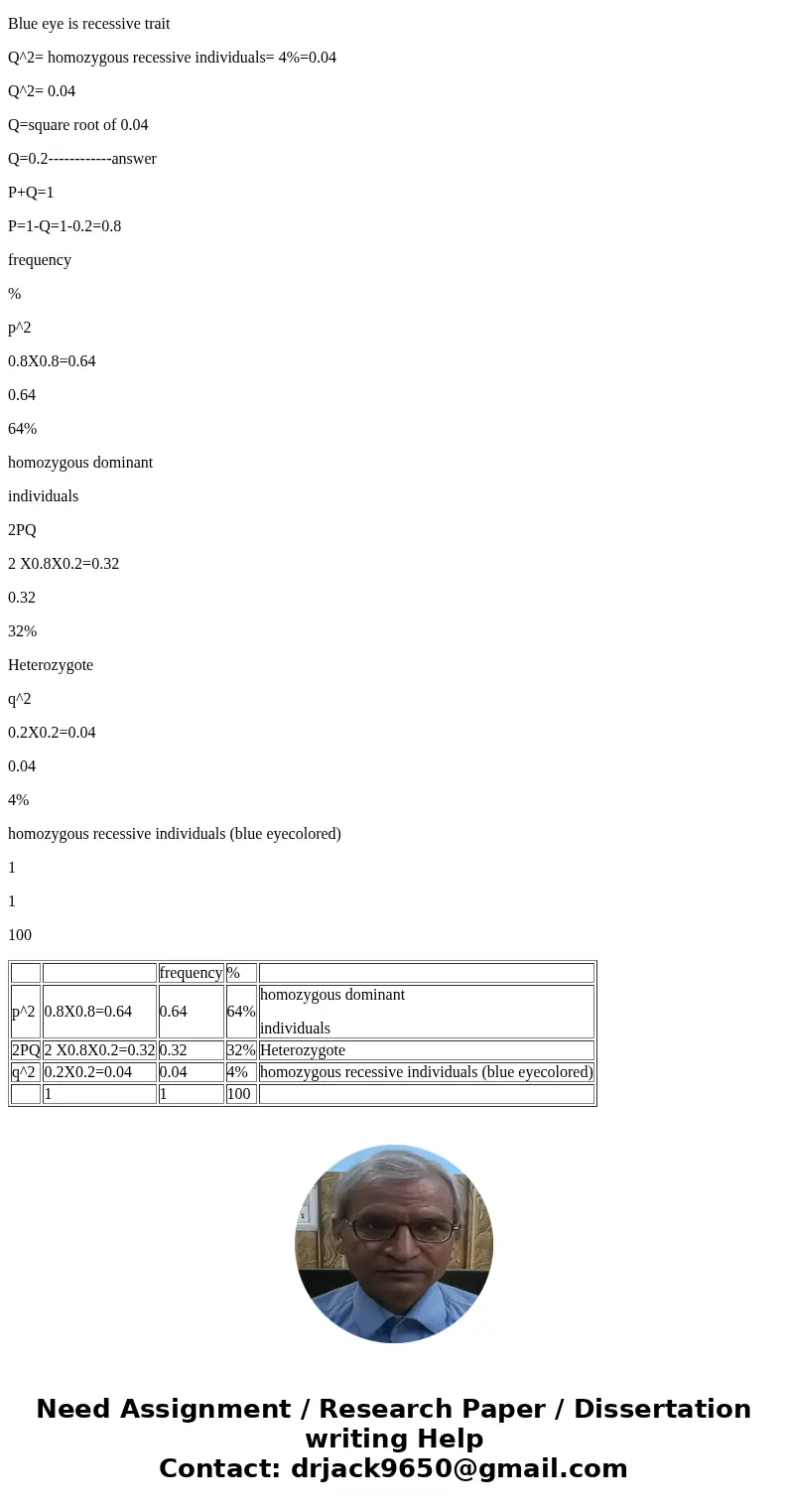After a long and productive career in grad school about a ge
After a long and productive career in grad school, about a generation later, you return to the same population as a young Ph.D. You again observe the frequency of blue eyes in your study group and find that it is now only 4 out of every 100 (4%). The gene pool has evolved. What is the value of Q? (Mind your decimal points!) _____ What is the value of P (=1-Q)?_____ What percentage of the population are homozygous dominant?_____ What percentage are heterozygotes?______ In your discussions with your study population, you learn that just after your first visit, there was a large migration of people into the region. You also know (from Question 3) that the gene pool has evolved (Q^2 declined from 9% to just 4%). Blue eyes are not maladaptive (they see just as well as brown eyes), so you can rule out natural selection as a cause of this change. There are no eye color alleles in your second visit that were not present in your first, so you can rule out mutation as a cause of this evolution of the gene pool. Only one generation has passed, and the social rules for who is allowed to mate with whom have not changed significantly, so you can probably rule out genetic drift as a cause of change. You do know that not too many people have left the area, but many people have moved there. On the basis of this knowledge, to what factor can you attribute the observed evolution of your study population from 9% blue eyes to 4% blue eyes? That is, which of the \"mechanisms\" has been most influential?)


Solution
question 4
After a long and productive career I grad school , about a generation later , you return to the same population as a young Ph.D . you again observe
the frequency of blue eyes in your study group
according to Hardy-Weinberg equation
p^2+ 2pq+q^2=1
Blue eye is recessive trait
Q^2= homozygous recessive individuals= 4%=0.04
Q^2= 0.04
Q=square root of 0.04
Q=0.2------------answer
P+Q=1
P=1-Q=1-0.2=0.8
frequency
%
p^2
0.8X0.8=0.64
0.64
64%
homozygous dominant
individuals
2PQ
2 X0.8X0.2=0.32
0.32
32%
Heterozygote
q^2
0.2X0.2=0.04
0.04
4%
homozygous recessive individuals (blue eyecolored)
1
1
100
| frequency | % | |||
| p^2 | 0.8X0.8=0.64 | 0.64 | 64% | homozygous dominant individuals |
| 2PQ | 2 X0.8X0.2=0.32 | 0.32 | 32% | Heterozygote |
| q^2 | 0.2X0.2=0.04 | 0.04 | 4% | homozygous recessive individuals (blue eyecolored) |
| 1 | 1 | 100 |


 Homework Sourse
Homework Sourse